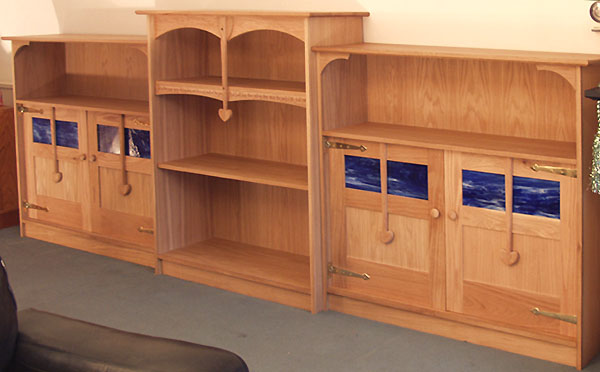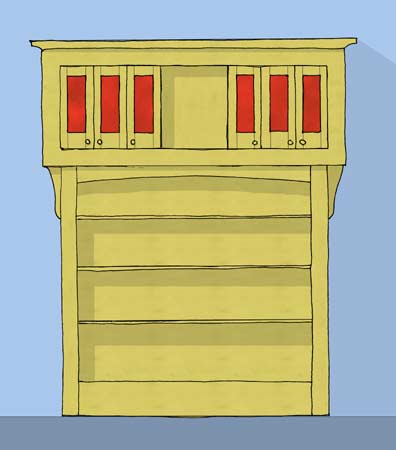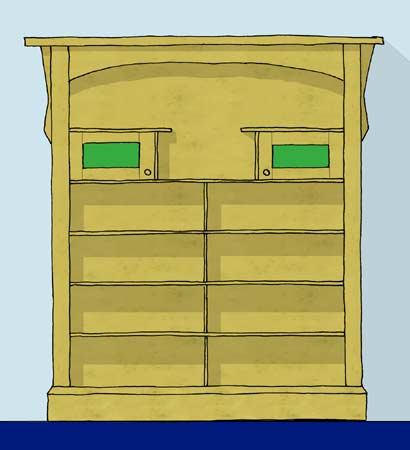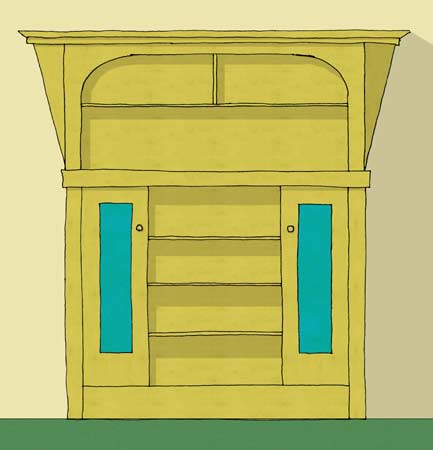Bookcases
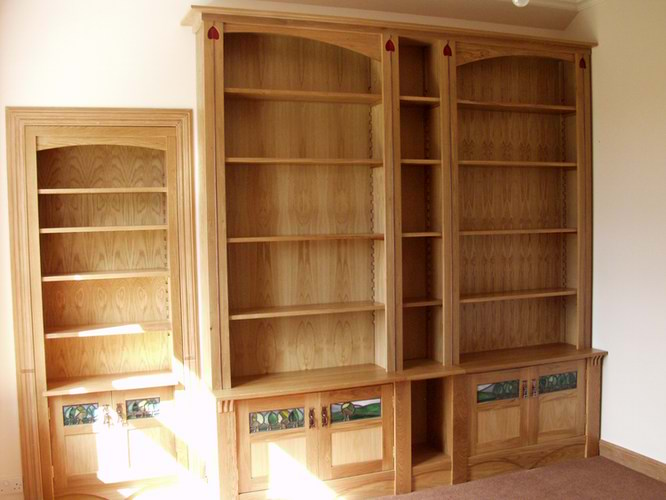
 Samson's Joinery began by building bookcases for archaeologists. At the very bottom is part of what I like to think of as a whole library. Three walls of a Glasgow tenement room covered with shelves. A few days after completion, they were full of books. It isn't Arts and Crafts in style, just pine columns and shelves and tongue and groove backing. But it was done with no other power tool than a £20 electric jigsaw! Above is the more mature Samson's Joinery style and our approach to a "library".
Samson's Joinery began by building bookcases for archaeologists. At the very bottom is part of what I like to think of as a whole library. Three walls of a Glasgow tenement room covered with shelves. A few days after completion, they were full of books. It isn't Arts and Crafts in style, just pine columns and shelves and tongue and groove backing. But it was done with no other power tool than a £20 electric jigsaw! Above is the more mature Samson's Joinery style and our approach to a "library".A decade ago, although I can scarcely believe it now, we made narrow pine bookcases for £200 to £250! Not any more.
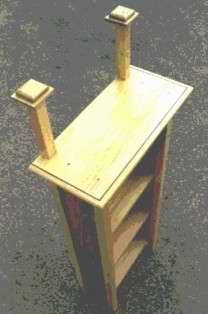 A typical attribute of our style was post and plank construction. Details often found on these bookcases were inlaid stringing, through tenons pegged with wedges (the example above is based on an American Roycroft bookcase) or simply dowels of a contrasting wood;
A typical attribute of our style was post and plank construction. Details often found on these bookcases were inlaid stringing, through tenons pegged with wedges (the example above is based on an American Roycroft bookcase) or simply dowels of a contrasting wood;  copper and coloured glass was sometimes used (another example is way below).
copper and coloured glass was sometimes used (another example is way below). Despite making so many bookcases, it has taken a long time for me to hit upon a style that I wish to continue building. This one to the right has little square ebony pegs and a few 1900 curves that are very satisfying. And I have made a number of drawings of bookcases that are of similar size and shape (see down below at the very bottom).
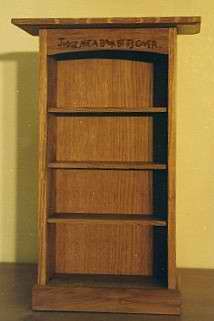
When the client can be convinced, the bookcase may even carry a motto. On this example to the left, a motto often used on Liberty's bookcases, "Judge not a book by its cover", is suitably Shakespearean, for the bookcase was to hold the complete works of the bard in miniature. Original Arts and Crafts mottos were commonly applied, the letters stained or painted a dark colour. We tend to engrave the lettering and then fill it with a wood paste, which is either coloured from the natural wood (mahogany, for instance) or the colour added is a natural pigment (iron oxide for red, ochre for yellow, etc.). Or the lettering is simply done in India ink.
Nothing quite sets off a bookcase like leaded glass in the cupboard doors. On our home page is our "Four Seasons" bookcase. In this bookcase, made for a famous Scottish playwright, we have simply used an artistic opaque glass. It has the advantage of saving you a bit of cash, and some makes of glass are almost abstract art on their own.
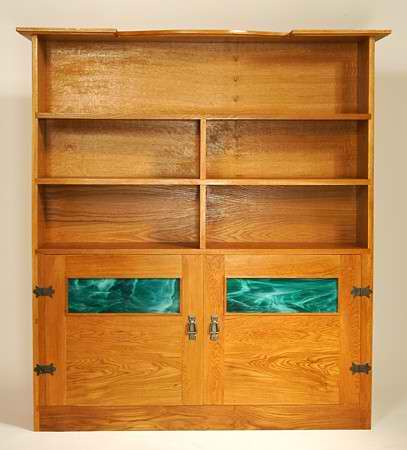
At the very bottom are a number of drawings manipulated with Photoshop. I'm quite chuffed with myself at having mastered the computer program (but secretly disappointed in myself for not being able to manage CAD programmes and thus cannot create 3D drawings). Increasingly, I use Photoshop to airbrush out my customers' frivolous knick-nacks that they insist on putting ontop of my beautiful furniture. What are they thinking of?
